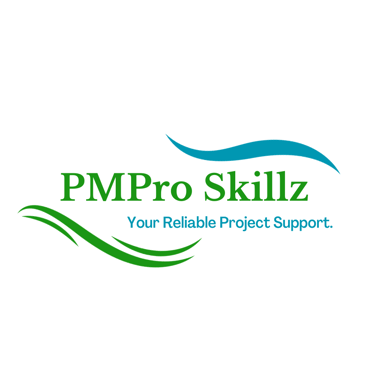Project Prioritization: Turning Endless Starts into Meaningful Finishes
Don't let valuable time slip away on projects that don't truly align with your goals. Instead, adopt a smart selection system to pinpoint the ideas that genuinely deserve your focus, delivering tangible results.
Iyanna Trimmingham
8/26/20235 min read


Don't let valuable time slip away on projects that don't truly align with your goals. Instead, adopt a smart selection system to pinpoint the ideas that genuinely deserve your focus, delivering tangible results.
We've all been there, haven't we? Caught up in the excitement of fresh project ideas, our minds buzzing with the possibilities. It's easy to get seduced by the allure of exciting new personal projects. Your mind races with dreams of leading a workshop, launching a side hustle, remodeling your home, or training for a marathon.
I've certainly found myself in this very situation. Despite my experience, I've had my fair share of moments where I allowed the allure of new personal projects to lead me astray. There have been times when I embarked on too many diverse projects, spreading myself thin and ending up with half-finished efforts, frustration, and, yes, wasted time.
However, experience has been an excellent teacher. It has given me the insight to recognize these alluring yet potentially perilous situations. It's like having a compass that guides you back to the right path when you begin to veer off course.
And that's precisely what I want to share with you - not just the theory but the practical wisdom to identify the RIGHT projects that align with your precious, limited time.
Tip 1: Define Your 3 Pillars
Start by identifying your own core “3 Pillars” - the three areas of life most important to you. Typical pillars include:
Health / Fitness
Friends / Family
Career / Finances
Personal Growth
Faith / Spirituality
Community / Social Causes
Learning / Creativity
Write down the three pillars holding up your personal vision of a fulfilling life. Keep these top of mind as you evaluate projects.
Tip 2: Audit How You Spend Your Time
Before rushing into new projects, take stock of how you currently spend your time via an audit.
Track all your activities for 1-2 weeks, categorizing each into your defined pillars.
A time audit reveals:
How closely your time aligns to your pillars already
The pillars lacking intentional focus
Habits that waste time without purpose
Your audit creates a benchmark to assess if potential projects will optimize your time or further dilute it.
Tip 3: Assess Your Values Alignment
For any project idea, assess alignment with your values and motivations on factors like:
Does this fulfill my pillar priorities?
Will this sufficiently challenge me?
Can I commit fully without reservation?
Am I willing to put in the hard work required?
Does this support my definition of a meaningful life?
Be utterly honest with yourself. A conflicting or lukewarm value alignment is a red flag.
Tip 4: Estimate a Meaningful ROI
Conduct a quick cost/benefit analysis to estimate potential return on investment of time/energy for each project by asking:
What specific benefits or outcomes will this achieve if successful? How meaningful are they?
How much time/effort will this require from me weekly? Is that truly feasible?
What happens if I invest all this time but the project fails or underdelivers? Can I live with that?
Your desired ROI need not be financial. But be clear on exactly what fulfillment successful project completion will bring to merit the demands on your time.
Tip 5: Assess Your Appetite for Risk
Every project has downside risks if you fail to achieve hoped-for results. Assess your personal appetite for risk exposure:
Low appetite - You want to minimize risk of wasted time/effort
Medium appetite - You are open to uncertain outcome projects if rewards are aligned
High appetite - You don't mind failed experiments as part of the process
Match prospective projects to your risk comfort zone. Don't take on highly speculative ventures unless you have a genuine high-risk tolerance.
Tip 6: Scrutinize Your Motivations
Dig into your underlying motivations to identify red flags:
Am I pursuing this just for external validation from others rather than internal fulfillment?
Am I clinging to unrealistic expectations rather than assessing pragmatic ROI?
Am I distracted by novelty versus committed to doing the work?
Am I resisting discomfort by avoiding higher priority goals?
Question any shaky motivations misaligned with your values to avoid bad investments of time.
Tip 7: Evaluate Your Competencies
A project well-aligned to your motivations but beyond your current abilities risks wasting much time reinventing the wheel.
Evaluate whether this project:
Leverages your existing skills and strengths
Aligns with your areas of subject matter expertise/passion
Allows you to further develop current competencies
Requires learning complex unfamiliar skills from scratch
Seeking some skills growth is beneficial, but minimize large competency gaps that slow your progress.
Tip 8: Test Assumptions Through Experiments


The most disruptive time wasters stem from untested assumptions around needs, feasibility, or projected outcomes.
Test assumptions through low-cost experiments like:
Conducting problem interviews to validate need
Creating minimum viable prototypes
Running crowdfunding campaigns for interest
Doing market/pricing surveys for demand
These safe-to-fail experiments prevent you from ending up months deep in commitments spawned from false assumptions.
Tip 9: Research the Time Investment Required
Don't assume a project will require X weeks/months. Do research on comparable efforts to estimate realistic timelines, such as:
Learning expected durations from experienced practitioners
Finding case studies detailing the time to achieve similar results
Calling people who have done this project and asking for data
This replaces guesswork with real data on the timeline you are signing up for. Getting clear on the full investment required is essential.
Tip 10: Complete a Trial Run First
Give new project ideas a test drive in miniature before going all in.
Carve out a short 1-2 week sprint where you:
Work on a key project component in isolated focus
Experience the actual workflow and skills required
Get a taste of the day-to-day effort and challenges
This trial provides the ultimate clarity on whether diving deeper into this project feels truly fulfilling and aligned.
Choosing Projects with Purpose
Being highly selective about the personal projects you take on requires saying no to many ideas. But it frees you from the tyranny of chasing every shiny object and safeguards your precious time.
Remember, the art of choosing personal projects isn't about eliminating the excitement of pursuing new ideas; it's about channeling that enthusiasm into endeavors that truly matter. By following these reflective exercises, evaluation criteria, and experimentation techniques, you gain the certainty that you are investing your energy into the right projects.
So here's to you, making wise choices, spending your limited time wisely, and carving out space for personal projects with maximum positive impact and minimum waste. Your future self will thank you for the clarity and purpose you bring to your journey of project selection. It's not about stopping your creativity; it's about harnessing it for a brighter, more meaningful future.

